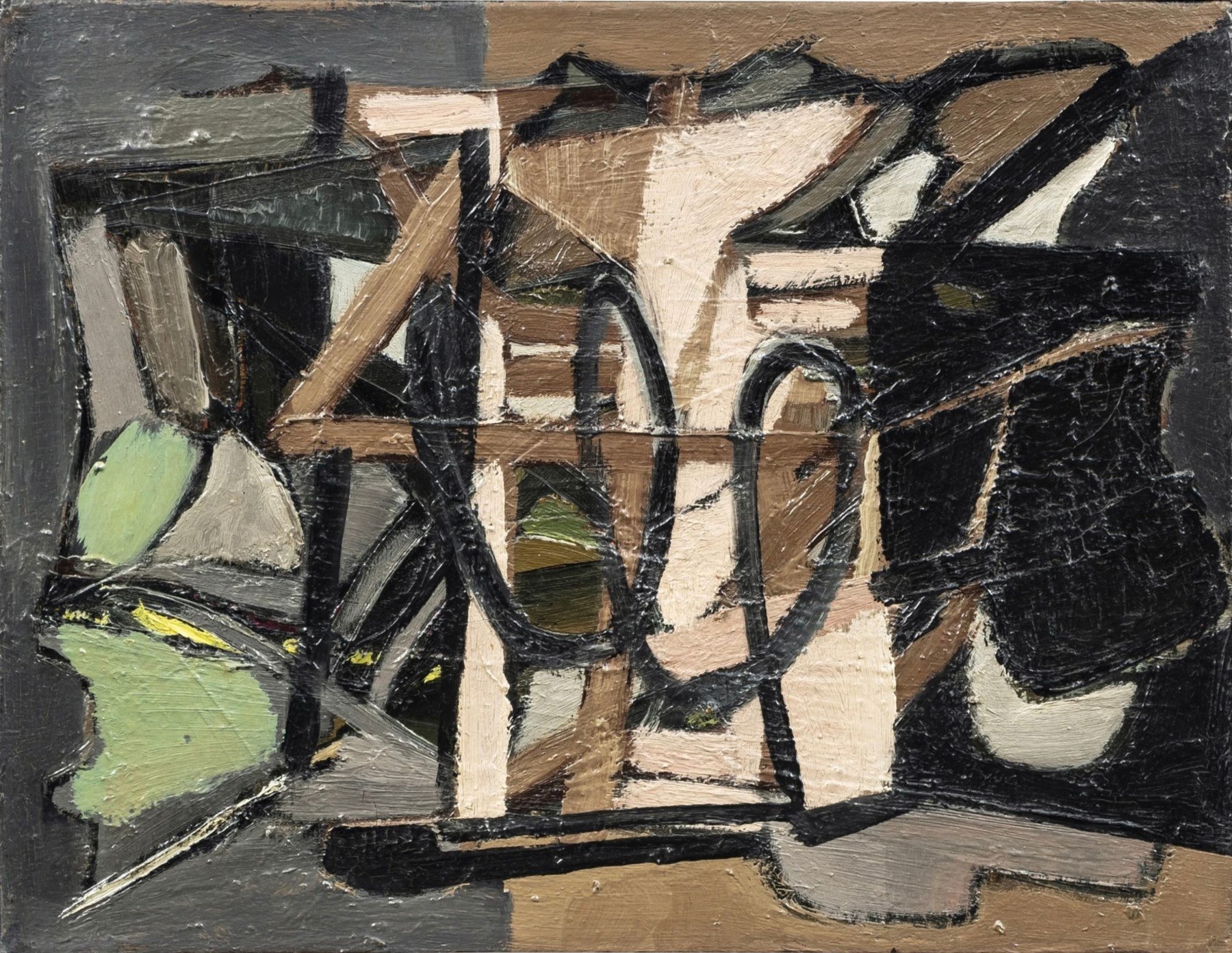NICOLAS DE STAËL
Skarstedt Paris announces Lignes de forces. Éclats de lumière (1945-1949) by Nicolas de Staël. Featuring sixteen important paintings from this period, the exhibition highlights the turning point that marked the beginning of Staël's artistic maturity.
July 5 - July 20, 2024
While it has often been overshadowed by the vibrant palettes of the 1950s, the period from 1945 to 1949 represents a fertile creative moment in the artist's career. The aim of this exhibition is to highlight the fundamental importance of these years in understanding the resulting body of work.
Born in St. Petersburg in 1914 into a noble military family close to the Tsar, Nicolas de Staël was orphaned at the age of eight, losing first his father and then his mother within a year of each other. He was taken in by the Fricero family in Uccle (Brussels), and later studied at the Academy of Fine Arts in Saint-Gilles-Les-Bruxelles.
From 1945 onwards, Nicolas de Staël’s paintings are characterized by an assembly of geometric shapes, sometimes straight, sometimes curved, with edges that collide with one another. The painter erects improbably balanced constructions in the foreground, pierced by interstices of light from a deep background. In Composition, 1945-1946, Staël clearly distinguishes the foreground assembly of lines, polygons, arabesque shapes and “sticks” from the plain, dark background.
In 1947, his relationships with Parisian gallery owners began to bear fruit, and Staël signed a contract with Galerie Louis Carré. With his second wife, Françoise Chapouton, and their children, he moved into a spacious, light-filled studio on rue Gauguet in the 14th arrondissement, where he became close to his great friend Georges Braque.
A unique, vibrant energy emanates from the works of the year that follows, reflecting the relentless work of their creator. In Un Conte, 1948, taut, opposing lines continue to divide space, but now give way to ochre, blue, red or chalky-white surfaces. The dark background is abandoned in favor of a greenish-brown one.
This was followed by the de Staël exhibition in Montevideo, for which his art historian friend Pierre Courthion wrote a preface, describing the artist's new-found greed for layers of paint in substance, superimposed in ever more complex compositions. His appetite for the sensitive world fueled his frenetic creativity, as evidenced by Harmonie grise, beige, taches rouge (composition), 1948.


